Onions, scientifically known as Allium cepa, are a versatile and widely used vegetable in various cuisines worldwide. Understanding the growth stages of onions is essential for successful cultivation. This document will provide a time-lapse of the onion growth process, from seed to harvest.
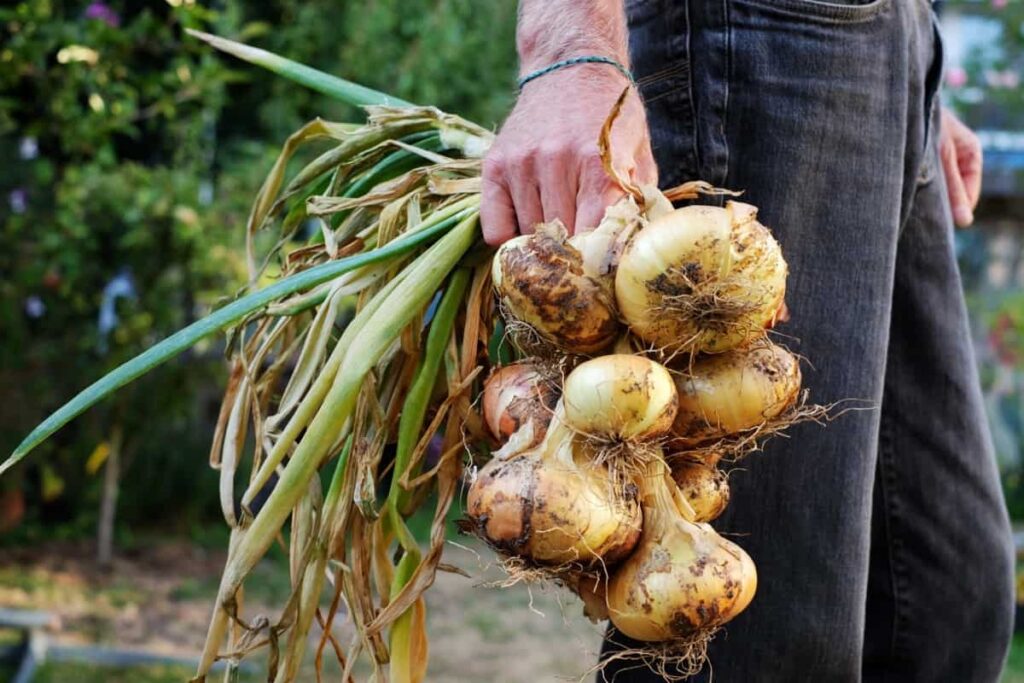
Growing Stages of Onions
Germination Stage: How Onions Begin Their Journey
The life cycle of an onion starts with the germination stage. At this point, the onion seed begins to absorb water, triggering the activation of enzymes within the seed. As the seed absorbs water, it swells and cracks open, allowing the embryonic root, or radicle, to emerge. This root then anchors the seedling into the soil, providing stability and access to nutrients.
Once the radicle has established itself, the onion seedling begins to send a shoot upward. This shoot eventually emerges from the soil, giving rise to the first leaves of the onion plant. These initial leaves are narrow and grass-like, crucial in photosynthesis.
In case you missed it: The Ultimate Guide to Onion Farming Business Plan for Maximum Profit
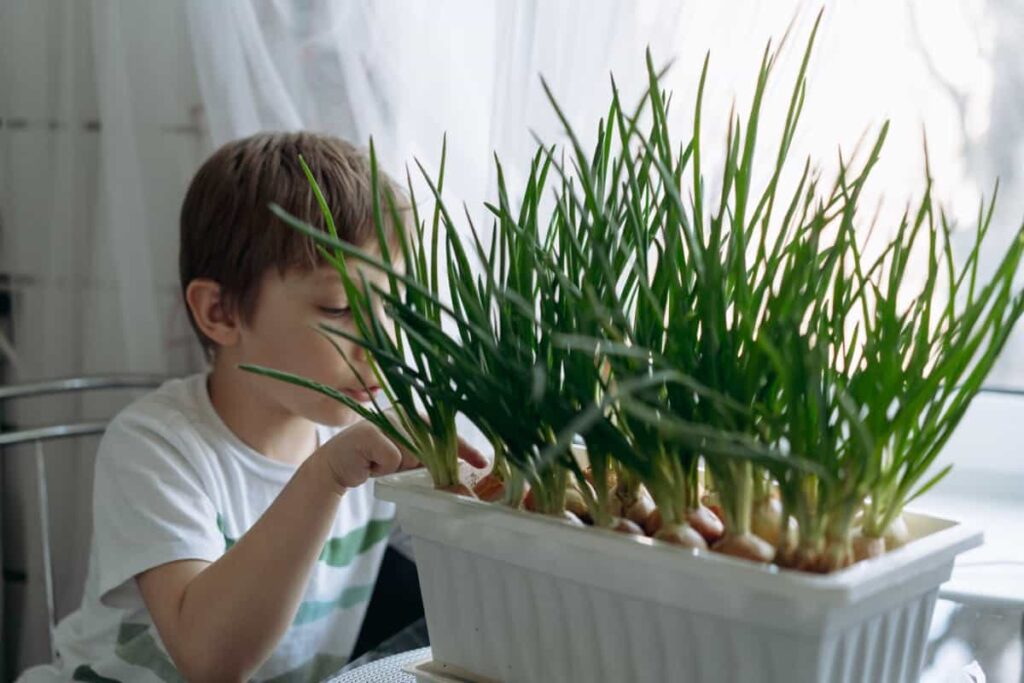
Seedling Stage: Nurturing Young Onion Plants
As the onion seedling continues to grow, it enters the seedling stage. During this phase, the roots develop further, branching out to explore the surrounding soil for water and nutrients. The leaves also continue to grow, becoming wider and more distinct in shape. The seedling primarily focuses on establishing a strong root system and accumulating energy for future growth.
Nurturing young onion plants during seedling is essential for their healthy development. They require regular watering to ensure adequate moisture in the soil and proper fertilization to provide necessary nutrients. Protecting the seedlings from extreme weather conditions and pests is crucial to prevent damage and promote optimal growth.
Bulb Formation: the Key to Onion Growth
During this stage, the onion undergoes significant changes that ultimately lead to the formation of the edible bulb. It typically occurs after the onion has gone through the sprouting and leaf growth stages. At this point, the onion plant redirects its energy towards bulb development. The bulb starts to swell and expand as layers of fleshy scales form around the center. These scales provide protection and nutrients for the developing bulb. As time progresses, the bulb continues to grow in size, eventually reaching its mature stage.
In case you missed it: Growing Onions Organically in Maharashtra: Cultivation Practices and Production Management
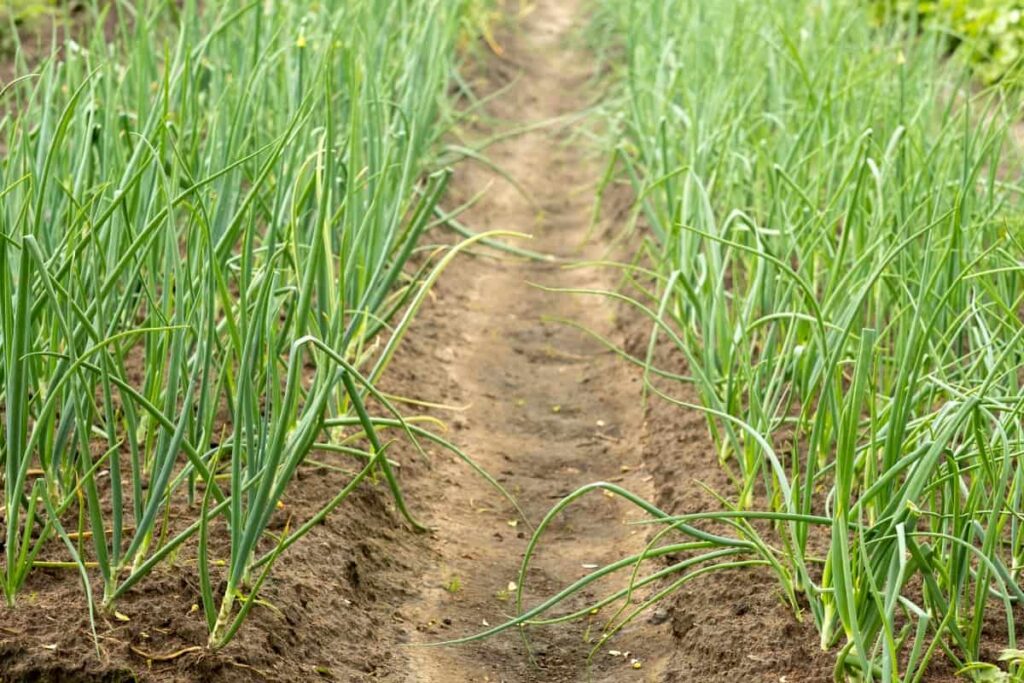
Leaf Development: Maximizing Photosynthesis for Bulb Growth
Leaf development is vital in this journey, as it maximizes photosynthesis, ultimately contributing to the bulb’s growth. As the onion plant matures, its leaves gradually emerge and expand, harnessing sunlight to produce energy through photosynthesis. The leaves act as the primary source of nourishment for the developing bulb, providing it with the necessary nutrients and sugars for growth. This intricate process is crucial for achieving healthy and robust onions.
Root Establishment: Anchoring and Nutrient Absorption
During this phase, the roots of the onion plant anchor it firmly in the soil, providing stability and support. Additionally, the roots play a vital role in absorbing essential nutrients from the soil, which are necessary for the onion’s overall development. As the onion seed germinates, the primary root, known as the radicle, emerges first. It elongates and branches out, creating a network of secondary roots. These roots penetrate deeper into the soil, seeking out water and nutrients. Over time, the roots establish a strong foundation, allowing the onion plant to grow and thrive.
In case you missed it: A Complete Guide to Onion Farming in Kenya: Varieties, Planting, Care, Yield, and Profits
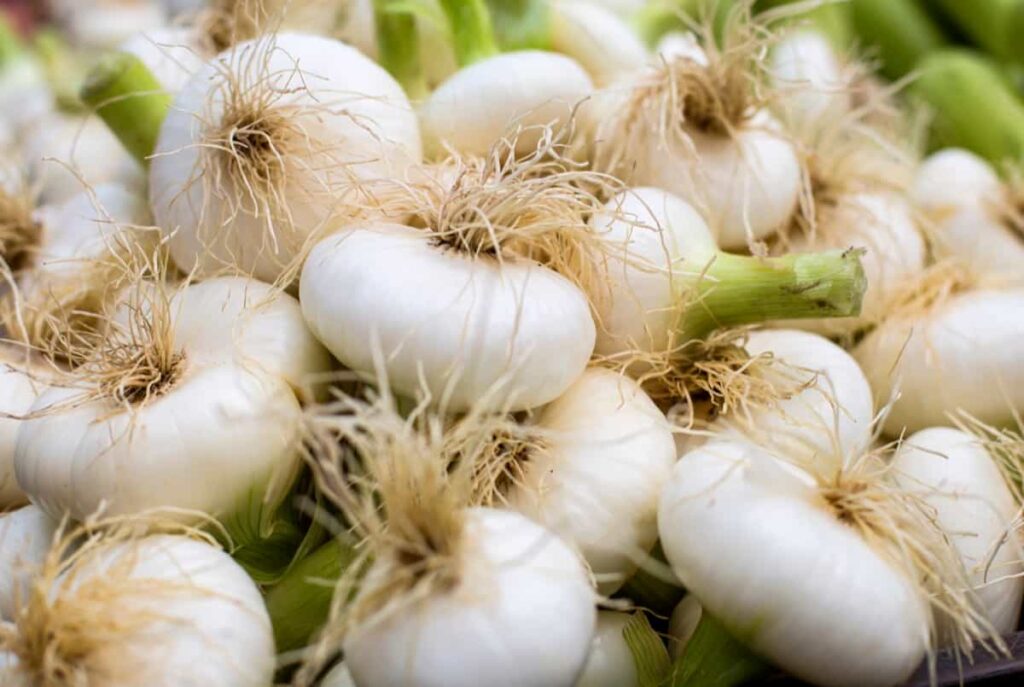
Vegetative Growth: Foliage Expansion and Maturation
In the growing stages of onions, the vegetative growth phase is crucial for foliage expansion and maturation. During this phase, the onion plant focuses on increasing the size and number of its leaves. It is characterized by the rapid development of green, elongated leaves that emerge from the bulb.
As the foliage expands, it collects sunlight and converts it into energy through photosynthesis. This energy is then utilized for the growth and development of the plant. Over time, the leaves mature, becoming thicker and greener. This vegetative growth phase plays a vital role in preparing the onion plant for the subsequent stages of development, such as bulb formation and ripening.
Bolting Stage: When Onions Start to Flower
The bolting stage is a crucial milestone in the growth of onions. It marks when onions start to flower, signaling the end of their vegetative growth phase. During this stage, the onion plant diverts its energy from leaf and bulb development towards producing flowers and seed heads. Bolting is triggered by various factors, including temperature, day length, and the onion variety. As the onion plant bolts, a tall stalk emerges from the center, bearing small white or pink flower clusters. These flowers are vital for pollination and seed production.
In case you missed it: Hybrid High Yield Onions Varieties in India: For Rabi, Kharif, Late, and Early Kharif
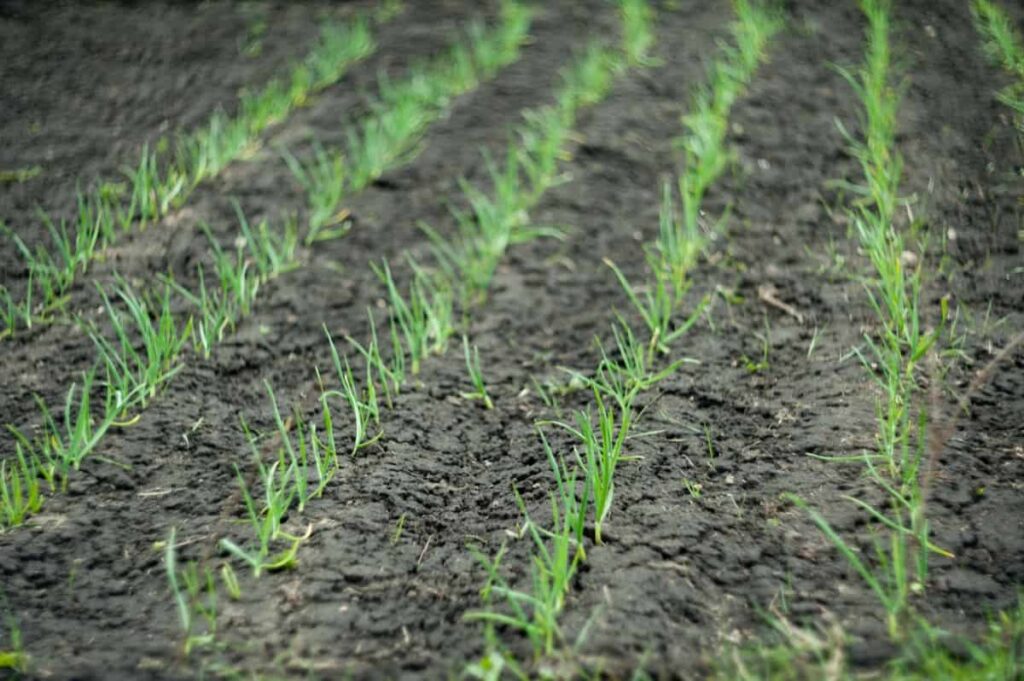
Ripening Process: Preparing Onions for Harvest
Before harvesting, it is important to prepare the onions for ripening. This involves bending the onion stems to promote the drying and curing process. By gently pushing the onion stems towards the ground, the flow of nutrients to the bulb is cut off, allowing the onion to focus its energy on ripening. Once the onions have been prepared, they should be left in the ground to allow the outer layers to dry completely. This drying process helps to extend the onions’ shelf life and enhance their flavor.
Onion Growth Time Lapse
The first stage is seed germination, where onion seeds sprout and develop roots. This process takes about 5 to 10 days. Next is the seedling stage, lasting for about 2 to 3 weeks. Here, the small onion plants grow their first set of true leaves and develop a stronger root system. After the seedling stage, the onion enters the bulb formation stage, which takes around 8 to 10 weeks.
In case you missed it: 15 Best Tomato Nettings to Support Trellis, Protecting from Insects, Squirrels. and Birds
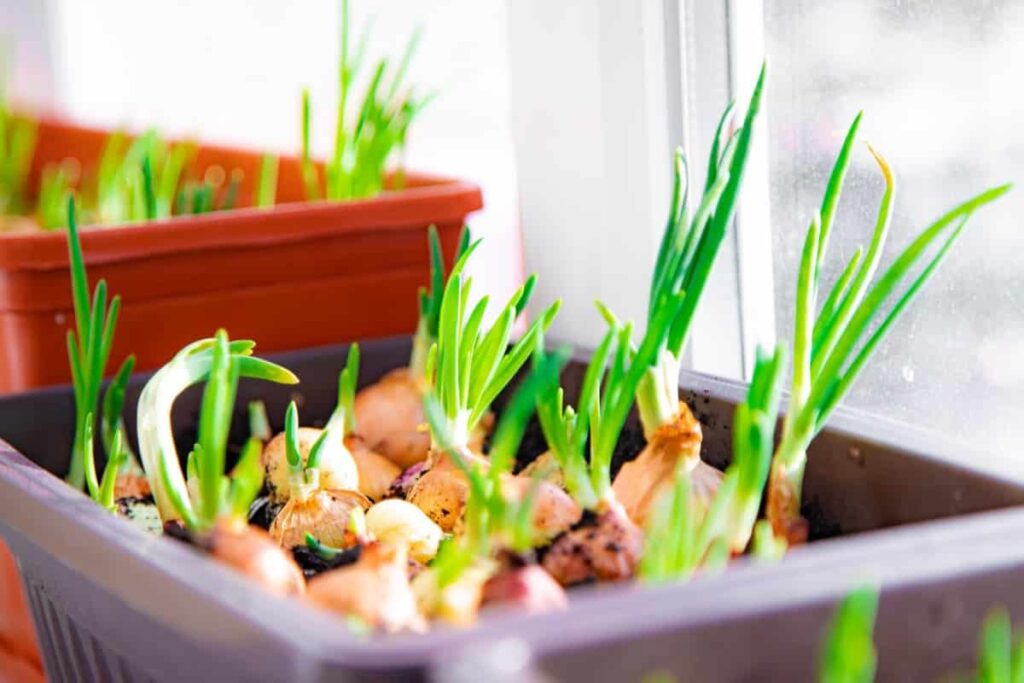
During this phase, the onion bulb expands as layers of cells divide and multiply. The final stage is maturity, occurring after approximately 100 to 175 days. At this point, the green foliage of the onion plant begins to dry and wilt, indicating that the bulbs are ready for harvest.
Harvesting and Curing: the Final Stages of Onion Growth
Harvesting onions is essential to the process, as it determines the optimal time to collect mature onions from the ground. Onions are typically ready for harvesting when their tops turn yellow and flop over. Once harvested, onions should dry in a well-ventilated area for a few weeks. This curing process allows the outer layers of the onion to dry and harden, promoting longer storage life. Properly cured and prepared onions can be stored in a cool, dry place for several months, ensuring a fresh supply throughout the year.
In case you missed it: 15 Best Weed Removal Tools with Price: Top Hand Weeders for Your Garden and Farm
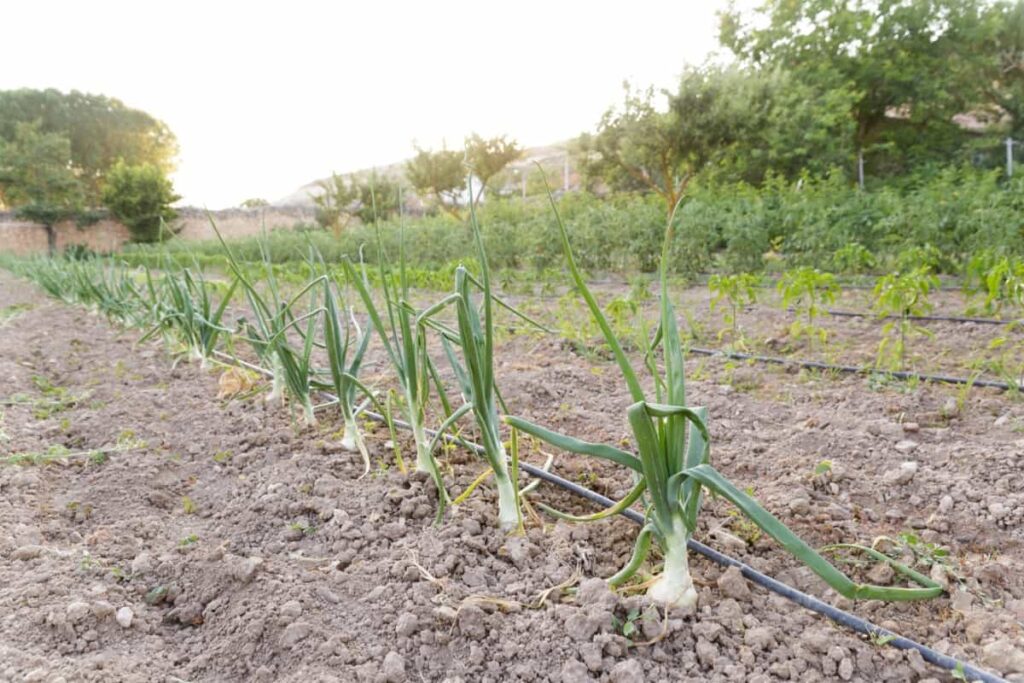
Conclusion
In conclusion, understanding the growing stages of onions and the ripening process is essential for a successful onion harvest. Each stage requires proper care and attention from planting to harvest to ensure healthy and flavorful onions. By following these guidelines, farmers and gardeners can enjoy the satisfaction of growing their own onions and reap the rewards of their hard work.
- Crops Grown in Summer Season: Best Choices for Summer Gardening
- Organic Pest Control for Tomato Farming
- How to Maximize Sheep Farming Profit
- Broccoli Varieties: Choosing the Right Cultivars for Your Farm
- How to Raise Pigs in Your Own Backyard: A Comprehensive Guide
- Budget Friendly Sheep Shed Ideas: Cheap and Low-Cost Tips
- How Much Do Cattle Farmers Make: Revenue Streams in Cattle Farming
- Management Pests and Diseases in Your Cotton Field
- Sheep Farming Business Plan for Beginners
